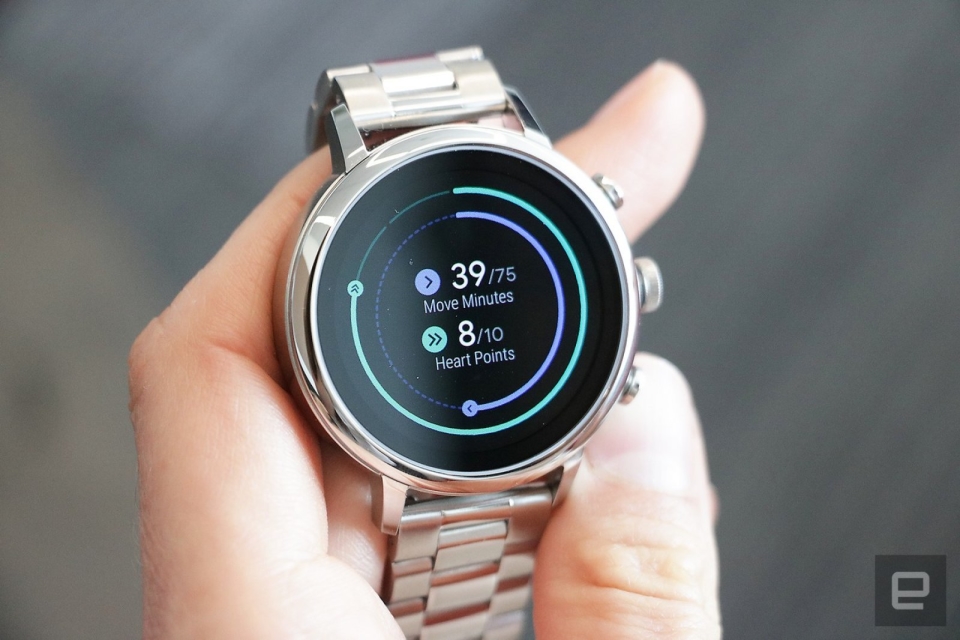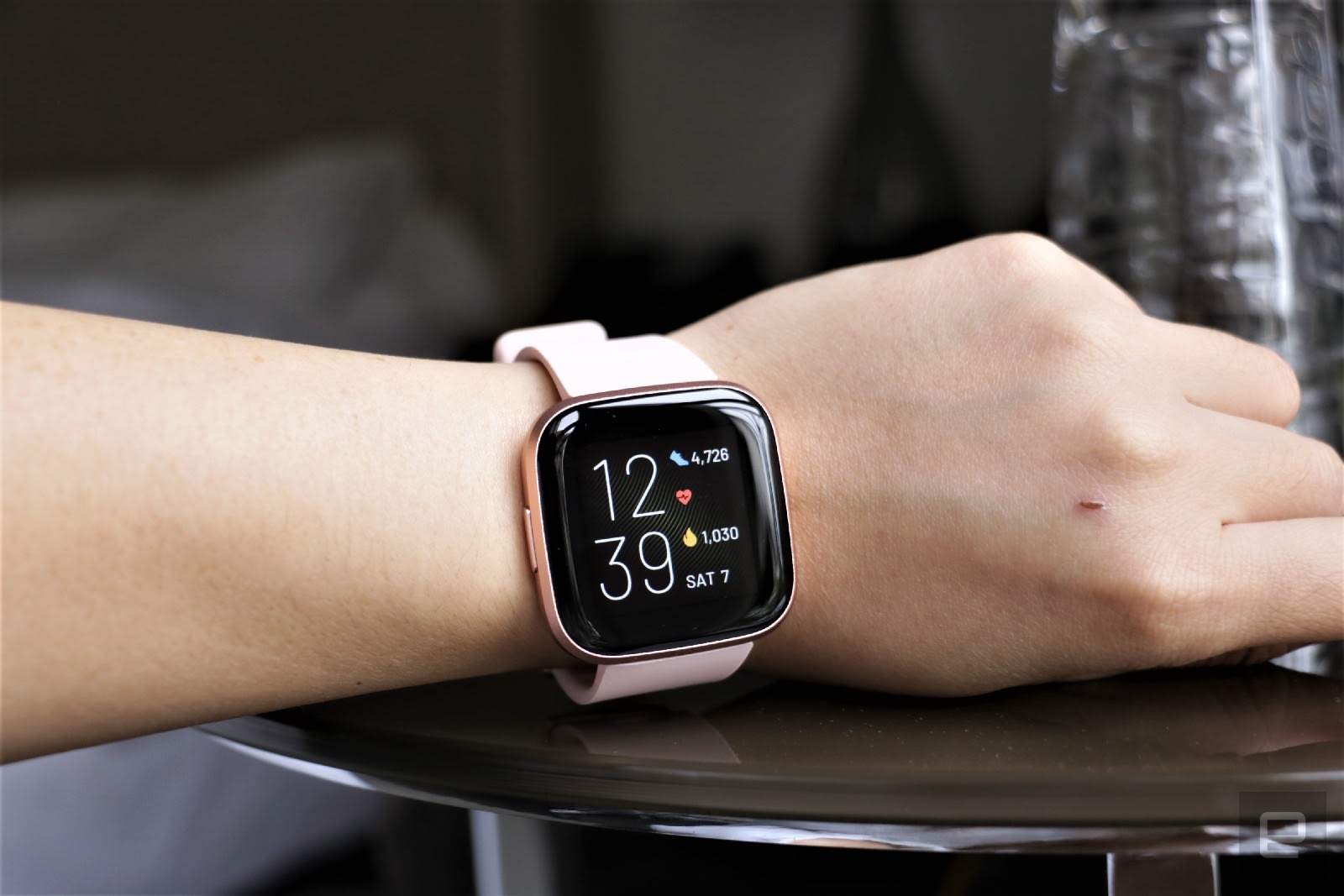The best smartwatches
Just a few years ago, the case for smartwatches wasn’t clear. Today, the wearable world is filled with various high-quality options, and a few key players have muscled their way to the front of the pack. Chances are, if you’re reading this guide, you’ve probably already decided that it’s time to upgrade from a standard timepiece to a smartwatch. Maybe you want to reach for your phone less throughout the day, or maybe you want to stay connected in a more discrete way. The list of reasons why you may want a smartwatch is long, as is the list of factors you’ll want to consider before deciding which to buy.
What to look for in a smartwatch

Compatibility
Apple Watches only work with iPhones, while Wear OS devices play nice with both iOS and Android. Smartwatches made by Samsung, Garmin, Fitbit and others are also compatible with Android and iOS, but you’ll need to install a companion app.
The smartwatch OS will also dictate the type and number of on-watch apps you’ll have access to. Many of these aren’t useful, though, making this factor a fairy minor one in the grand scheme of things.
Price
The best smartwatches generally cost between $300 and $400. Compared to budget smartwatches, which cost between $100 and $250, these pricier devices have advanced fitness, music and communications features. They also often include perks like onboard GPS, music storage and NFC, which budget devices generally don’t.
Some companies make specialized fitness watches: Those can easily run north of $500, and we’d only recommend them to serious athletes. Luxury smartwatches from brands like TAG Heuer and Hublot can also reach sky-high prices, but we wouldn’t endorse any of them. These devices can cost more than $1,000, and you’re usually paying for little more than a brand name and some needlessly exotic selection of build materials.
Battery life
Battery life remains one of our biggest complaints about smartwatches, but there’s hope as of late. You can expect two full days from Apple Watches and most Wear OS devices. Watches using the Snapdragon Wear 3100 processor support extended battery modes that promise up to five days on a charge — if you’re willing to shut off most features aside from, you know, displaying the time. Snapdragon’s next-gen Wear 4100 and 4100+ processors were announced in 2020, but only a handful of devices – some of which aren’t even available yet – are using them so far. Other models can last five to seven days, but they usually have fewer features and lower-quality displays. Meanwhile, some fitness watches can last weeks on a single charge.
A few smartwatches now support faster charging, too. For example, Apple promises the Series 7 can go from zero to 80 percent power in only 45 minutes, and get to full charge in 75 minutes. The OnePlus Watch is even speedier, powering up from zero to 43 percent in just 10 minutes. (Mind you that turned out to be one of the only good things about that device.)
Communication
Any smartwatch worth considering delivers call, text and app alerts to your wrist. Call and text alerts are self explanatory, but if those mean a lot to you, consider a watch with LTE. They’re more expensive than their WiFi-only counterparts, but data connectivity allows the smartwatch to take and receive calls, and do the same with text messages, without your phone nearby. As far as app alerts go, getting them delivered to your wrist will let you glance down and see if you absolutely need to check your phone right now.
Fitness tracking
Activity tracking is a big reason why people turn to smartwatches. An all-purpose timepiece should log your steps, calories and workouts, and most of today’s wearables have a heart rate monitor as well.
Many smartwatches also have onboard GPS, which is useful for tracking distance for runs and bike rides. Swimmers will want something water resistant, and thankfully most all-purpose devices now can withstand at least a dunk in the pool. Some smartwatches from companies like Garmin are more fitness focused than others and tend to offer more advanced features like heart-rate-variance tracking, recovery time estimation, onboard maps and more.
Health tracking on smartwatches has also seen advances over the years. Both Apple and Fitbit devices can estimate blood oxygen levels and measure ECGs. But the more affordable the smartwatch, the less likely it is that it has these kinds of health tracking features; if collecting that type of data is important to you, you’ll have to pay for the privilege.
Music
Your watch can not only track your morning runs but also play music while you’re exercising. Many smartwatches let you save your music locally, so you can connect wireless earbuds and listen to tunes without bringing your phone. Those that don’t have onboard storage for music usually have on-watch music controls, so you can control playback without whipping out your phone. And if your watch has LTE, local saving isn’t required — you’ll be able to stream music directly from the watch to your paired earbuds.
Always-on displays
Most flagship smartwatches today have some sort of always-on display, be it a default feature or a setting you can enable. It allows you to glance down at your watch to check the time and any other information you’ve set it to show on its watchface without lifting your wrist. This will no doubt affect your device’s battery life, but thankfully most always-on modes dim the display’s brightness so it’s not running at its peak unnecessarily. Cheaper devices won’t have this feature; instead, their screens will automatically turn off to conserve battery and you’ll have to intentionally check your watch to turn on the display again.
NFC
Many smartwatches have NFC, letting you pay for things without your wallet. After saving your credit or debit card information, you can hold your smartwatch up to an NFC reader to pay for a cup of coffee on your way home from a run. Keep in mind that different watches use different payment systems: Apple Watches use Apple Pay, Wear OS devices use Google Pay, Samsung devices use Samsung Pay and so forth.
Apple Pay is one of the most popular NFC payment systems, with support for multiple banks and credit cards in 72 different countries, while Samsung and Google Pay work in fewer regions. It’s also important to note that both NFC payment support varies by device as well for both Samsung and Google’s systems.
Engadget Picks
Best overall: Apple Watch
The Apple Watch has evolved into the most robust smartwatch since its debut in 2015. It’s the no-brainer pick for iPhone users, and we wouldn’t judge you for switching to an iPhone just to be able to use an Apple Watch. The latest model, the Apple Watch Series 7, has solid fitness-tracking features that will satisfy the needs of beginners and serious athletes alike. It also detects if you’ve fallen, can carry out ECG tests and measures blood oxygen levels. Plus, it offers NFC, onboard music storage and many useful apps as well as a variety of ways to respond to messages.
The main differences between the Series 7 and the Series 6 that preceded it are the 7’s larger display, its overnight respiratory tracking and faster charging. The slight increase in screen real estate allows you to see things even more clearly on the small device, and Apple managed to fit a full QWERTY keyboard on it to give users another way to respond to messages. The faster charging capabilities are also notable – we got 10 percent power in just 10 minutes of the Watch sitting on its charging disk, and it was fully recharged in less than one hour.
While the $399 Series 7 is the most feature-rich Apple Watch to date, it’s also the most expensive model in the Watch lineup, and for some shoppers there might not be clear benefits over older editions. Those who don’t need an always-on display, ECG or blood oxygen readings might instead consider the Apple Watch SE, which starts at $279.
We actually regard the Watch SE as the best option for first-time smartwatch buyers, or people on stricter budgets. You’ll get all the core Apple Watch features as well as things like fall detection, noise monitoring and emergency SOS, but you’ll have to do without more advanced hardware perks like a blood oxygen sensor and ECG monitor.
Buy Apple Watch Series 7 at Amazon - $399Buy Apple Watch SE at Amazon - $279Best budget: Fitbit Versa 2

Dropping $400 on a smartwatch isn’t feasible for everyone, which is why we recommend the Fitbit Versa 2 as the best sub-$200 option. It’s our favorite budget watch because it offers a bunch of features at a great price. You get all of these essentials: Fitbit’s solid exercise-tracking abilities (including auto-workout detection), sleep tracking, water resistance, connected GPS, blood oxygen tracking and a six-day battery life. It also supports Fitbit Pay using NFC and it has built-in Amazon Alexa for voice commands. While the Versa 2 typically costs $150, we’ve seen it for as low as $100.
Buy Fitbit Versa 2 at Amazon - $150Best for Android users: Samsung Galaxy Watch 4
Samsung teamed up with Google recently to revamp its smartwatch OS, but that doesn’t mean Tizen fans should fret. The Galaxy Watch 4 is the latest flagship wearable from Samsung and it runs on WearOS with the new One UI, which will feel familiar if you’ve used Tizen before. Also, the watch now comes with improved third-party app support and access to the Google Play Store, so you can download apps directly from the watch.
We like the Galaxy Watch 4 for its premium design as well as its comprehensive feature set. It has a 3-in-1 biometric sensor that enables features like body mass scanning, bloody oxygen tracking and more, plus it has a plethora of trackable workout profiles. Both the Galaxy Watch 4 and the Watch 4 Classic run on new 5nm processors and have more storage than before, as well as sharper, brighter displays. They both run smoothly and rarely lag, but that performance boost does come with a small sacrifice to battery life: the Galaxy Watch 4 typically lasted about one day in our testing, which while not the best, may not be a dealbreaker for you if you plan on recharging it every night.
Buy Galaxy Watch 4 at Amazon - $250Fashion-forward options
Yes, there are still companies out there trying to make “fashionable” smartwatches. Back when wearables were novel and generally ugly, brands like Fossil, Michael Kors and Skagen found their niche in stylish smartwatches that took cues from analog timepieces. You also have the option to pick up a “hybrid” smartwatch from companies like Withings and Garmin – these devices look like standard wrist watches but incorporate some limited functionality like activity tracking and heart rate monitoring. They remain good options if you prefer that look, but thankfully, wearables made by Apple, Samsung, Fitbit and others have gotten much more attractive over the past few years.
Ultimately, the only thing you can’t change after you buy a smartwatch is its case design. If you’re not into the Apple Watch’s squared-off corners, all of Samsung’s smartwatches have round cases that look a little more like a traditional watch. Most wearables are offered in a choice of colors and you can pay extra for premium materials like stainless steel. Once you decide on a case, your band options are endless – there are dozens of first- and third-party watch straps available for most major smartwatches, allowing you to change up your look whenever you please.
Cherlynn Low contributed to this guide.





